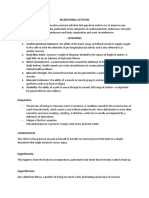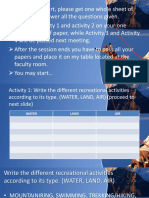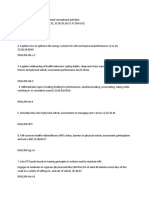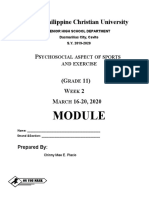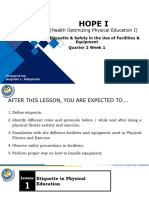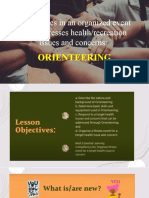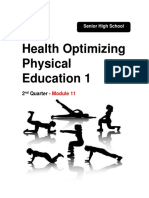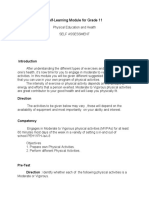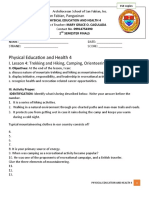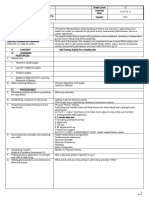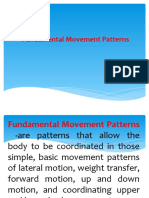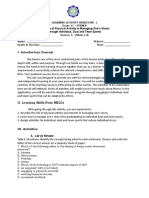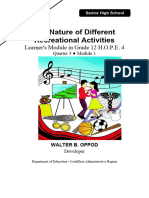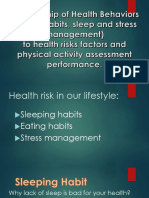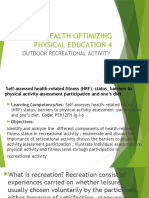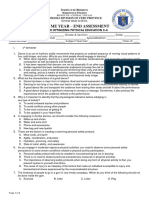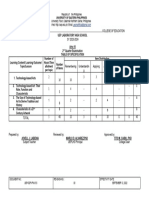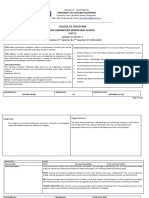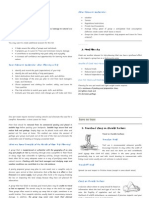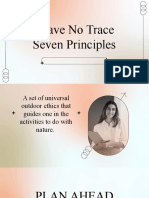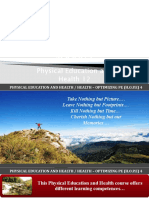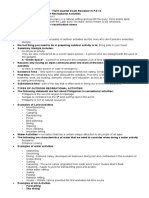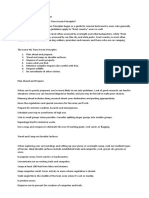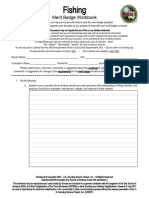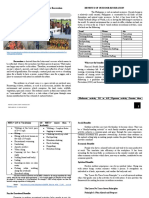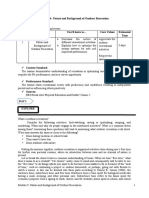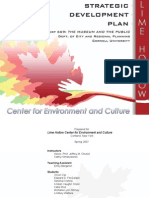0% found this document useful (0 votes)
156 views12 pagesPe and Health 2nd Sem Module 2
This document provides information about a physical education and health module for a senior high school laboratory in the Philippines. Specifically, it discusses the first lesson which covers the nature and background of outdoor activities. The lesson defines outdoor recreation, provides examples of land, water and air activities, and discusses the physical and psycho-emotional benefits of outdoor recreation such as improved cardiovascular fitness, reduced stress and feeling revitalized.
Uploaded by
Jovell J. LabeniaCopyright
© © All Rights Reserved
We take content rights seriously. If you suspect this is your content, claim it here.
Available Formats
Download as DOCX, PDF, TXT or read online on Scribd
0% found this document useful (0 votes)
156 views12 pagesPe and Health 2nd Sem Module 2
This document provides information about a physical education and health module for a senior high school laboratory in the Philippines. Specifically, it discusses the first lesson which covers the nature and background of outdoor activities. The lesson defines outdoor recreation, provides examples of land, water and air activities, and discusses the physical and psycho-emotional benefits of outdoor recreation such as improved cardiovascular fitness, reduced stress and feeling revitalized.
Uploaded by
Jovell J. LabeniaCopyright
© © All Rights Reserved
We take content rights seriously. If you suspect this is your content, claim it here.
Available Formats
Download as DOCX, PDF, TXT or read online on Scribd
/ 12







